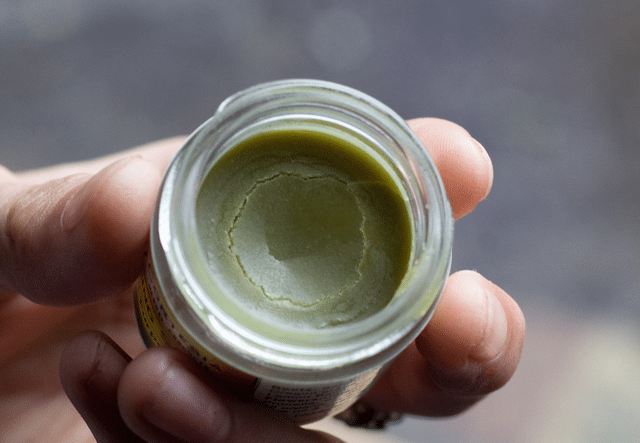According to recent information, cannabis edibles make up about 11 percent of the cannabis market, with more people preferring to inhale their cannabis than eat it. [1] Yet, it seems that trends are evolving. A growing number of cannabis users are beginning to rather eat their cannabis than smoke it, with the edible market proving to be lucrative based on new studies. [2]
This is unsurprising, considering edibles with cannabutter and hash butter are more lung-friendly and significantly more discrete, with many proving to be a vehicle for a more sustained high than smoked cannabis products.
However, there is a rising problem in the recreational and medicinal cannabis communities that produce edibles using hash butter. This problem is that the potency, duration, and timing of an edible experience can vary greatly because it is incredibly difficult to know the effects of an edible with hash butter as an ingredient. Not to mention, hash butter can perform differently when subjected to differing cooking mediums, such as frying and baking.
That’s why producers need to create hash butter in such a way as to know how much THC will be present as much as can be measured. In this article, we’ve used current cannabis research into hash butter – although it is limited – to detail how you can create hash butter yourself. Let’s dive into what hash butter is, how it’s used, what you’ll need to make it, and how you can perform a DIY extraction of to create hash butter safely at home.
What Is Hash Butter?
Hash butter is made with hash rather than trim or buds. It is essentially regular butter infused with cannabinoids extracted from cannabis plants. These cannabinoids, notably tetrahydrocannabinol (THC )and cannabidiol (CBD) are accountable for the medicinal and therapeutic effects associated with cannabis.
Hash butter can be used in various recipes, from baked goods like cookies and brownies and cake to savory dishes like pasta and sauces. The versatility of hash butter makes it a favorite among cannabis enthusiasts who prefer edibles over smoking.
Is Hash Butter Safe To Consume?
It is true that edibles made using hash butter are largely considered safe, discrete, and effective when it comes to attaining the intoxicating and therapeutic effects of cannabis without being exposed to smoking. However, the absorption through the digestive tract may differ within individuals, leading to different effects, therapeutic or medicinal efficacy, and safety.
This means that two edibles containing hash butter with the same quantity of THC can cause different effects on people, with one finding its effects minimal while another potent. [3] In addition, consumption of edibles can lead to adverse health effects, with a recent study indicating that 11 percent of all cannabis-related emergency room visits were because of cannabis edibles. [4]
Thus, until further research is done into the use of hash butter in edibles, it’s best to make hash butter and consume edibles containing it cautiously to be on the safe side.
DIY Hash Butter Extraction Method: Step By Step
Making hash butter is similar to making cannabutter. To help individuals interested in making hash butter understand the DIY extraction of cannabinoids methodology, we’ve shared the equipment, ingredients, and steps needed to successfully infuse butter with hash containing potent cannabinoids.
Ingredients
- 1 to 3g of hash, depending on the desired potency
- 4 cups of water
- Two sticks of butter
Equipment
- Pot or a saucepan
- Heat-proof container
- Whisk or a spoon
- Strainer or cheesecloth
Method
- The first thing you will need to do is decarboxylate your hash. To do this, preheat your home oven to 230 degrees Fahrenheit. Once preheated, you can place your hash onto an oven tray and bake it for 30 to 40 minutes. Once in the oven, the heat will gently decarb the hash to activate the cannabinoids within it, ensuring that any dish you plan to make with the hash butter turns out potent.
- While the hash is decarbing in your oven, pour the water into a saucepan or pot and bring it to a simmer. When the hash is finished decarbing, you can break it into small pieces while waiting for the water to heat. Smaller pieces will make the mixing process with the butter significantly easier.
- Before the water starts to boil, add the sticks of butter slowly and stir until they melt evenly. Be careful not to let the water boil while you do this, as it can impact the end result.
- Once the sticks of butter have melted completely, you can add the hash you’ve broken into smaller pieces. With the pieces added, you can leave the mixture to boil for one to four hours while stirring often. If the water starts to evaporate, you can top it up to ensure the butter doesn’t burn.
- After the allocated time has passed, you can strain the butter mixture using cheesecloth or a fine mesh strainer into a heat-proof dish. Once strained, you can place the mixture in the fridge to solidify. Once solidified, you can tip out any leftover water and discard it.
- With the butter made, you can store it in the fridge until you decide you want to use it to make edibles.
Other DIY Techniques To Extract Cannabinoids For Hash Butter
The above method was the easiest to use if you want to extract cannabinoids from hash and use them to create hash butter. Below are two other DIY techniques to achieve the same results that you might find easier.
Double Boiler Extraction
Those worried about overboiling their water and burning their butter can try the double boiler DIY extraction of cannabinoid method. This technique involves using gentle heat to keep the water at a consistent simmer for two to three hours to prevent butter from burning or overheating. Here are the steps you should follow:
- Fill the bottom of a sturdy double boiler ( a type of pot) with water and place it on low heat.
- Add butter and finely ground cannabis hash that has been decarbonated to the top pot, ensuring it doesn’t touch the water below.
- Simmer for two to three hours, stirring occasionally.
- Strain the mixture through cheesecloth or a fine mesh strainer and refrigerate the infused butter until solidified.
- Use it when you’re ready to make something with hash butter as an ingredient.
Sous Vide Extraction
Another technique ideal for beginners who want to control the water temperature strictly when making hash butter is to use the DIY sous vide cannabinoid extraction method. [5] This method offers individuals precise temperature control, often resulting in superior hash butter extraction. These are the steps you need to follow:
- Start by placing finely ground cannabis hash that has been decarbed and butter in a vacuum-sealed bag.
- Seal the bag using a vacuum sealer and immerse it in a water bath heated to 185 degrees Fahrenheit.
- Allow the mixture to infuse for four to six hours, ensuring the temperature remains constant.
- Once infused, strain the butter through a cheesecloth or fine mesh strainer and refrigerate it until solidified.
- Once solidified, you can use the hash butter immediately or store it in your fridge or freezer for use at a later date.
DIY Hash Butter Safety Tips When Extracting Cannabinoids
Safety should be just as much a priority when performing DIY extraction of cannabinoids to make hash butter as it is when commercially producing hash butter.
That’s why it’s a good idea to follow the safety tips below regarding how to safely make hash butter. [6] Most of these tips are easy to implement, even if you are making hash butter at home in a traditional kitchen instead of a commercial lab.
- Wear protective gear: It might seem unnecessary, but it’s important to use protective gear when making hash butter. Typically, it’s advisable to use oven gloves or temperature-resistant gloves and protective glasses or goggles. These will protect your hands and eyes from hot liquids, preventing burns and eye irritation.
- Ensure proper ventilation: Creating hash butter at home can be challenging when it comes to ventilation, but if your kitchen is well-ventilated with lots of windows, you shouldn’t encounter issues. Simply ensure the windows are open during the DIY extraction process to ensure there is no buildup of harmful fumes from decarboxylating your cannabis hash.
- Maintain temperature control: When making hash butter, the last thing you want to do is burn your hash or boil your water. To avoid this, you need to use one of the DIY extraction methods we supplied to ensure you appropriately extract cannabinoids at the right temperatures and infuse them with the butter to achieve the desired potency level.
- Clear labeling: Once you’ve made your hash butter, it’s vital to label it appropriately if you plan on storing it for an extended period of time. Failing to label it could put your health at risk if you use hash butter that is too old. You also risk using hash butter, which has no effect at all. Not to mention, labeling your hash butter will ensure you avoid accidental consumption.
How Long Does Hash Butter Last?
Hash butter will eventually lose its potency, so storing it only for as long as it can be safely used is important. On average, hash butter can last up to one week in the fridge and up to three months in the freezer. So keep these timeframes in mind if you plan to use your hash butter in recipes after you’ve made it and want to ensure maximum potency.
The Wrap-Up On DIY Hash Butter Through Cannabinoid Extraction
When it comes to making hash butter and the DIY extraction of cannabinoids, the process isn’t overly difficult, and multiple techniques can be used. However, it’s incredibly important for individuals performing a DIY extraction to follow the appropriate steps and safety procedures to ensure the best product is made and that accidents don’t occur.
In addition, although there isn’t much research surrounding the benefits of using hash butter in edibles, it is seemingly a better option than smoking cannabis and delivers more potent therapeutic and medicinal effects. So, experiment with the different extraction techniques to find the one that best suits your abilities and needs when making hash butter.
References:
- Headset. (2023, November 16). Cannabis edibles: An analysis of category trends & performance. https://www.headset.io/industry-reports/cannabis-edibles-an-analysis-of-category-trends-performance#:~:text=Edibles%20are%20the%20fourth%20highest,5.8%25%20we%20see%20in%20Canada.
- Barrus, D. G., Capogrossi, K. L., Cates, S. C., Gourdet, C. K., Peiper, N. C., Novak, S. P., Lefever, T. W., & Wiley, J. L. (2016, November). TASTY THC: Promises and challenges of cannabis edibles. Methods report (RTI Press). https://www.ncbi.nlm.nih.gov/pmc/articles/PMC5260817/
- Gaines, J. (2021, May 26). Building a better edible. Knowable Magazine | Annual Reviews. https://knowablemagazine.org/content/article/food-environment/2021/building-a-better-edible
- ACP journals. (n.d.). https://www.acpjournals.org/doi/full/10.7326/M18-2809
- Logic. (2023, March 5). Decarboxylate your cannabis with Sous vide. THCFarmer. https://www.thcfarmer.com/threads/decarboxylate-your-cannabis-with-sous-vide.147224/
- Evaluation of potential hazards during harvesting and … (n.d.-b). https://www.cdc.gov/niosh/hhe/reports/pdfs/2015-0111-3271.pdf

